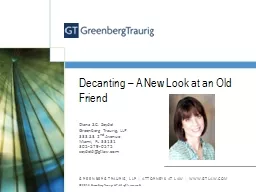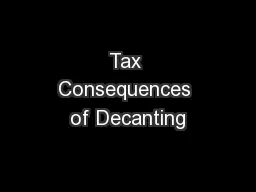PPT-Decanting – A New Look at an Old Friend
Author : myesha-ticknor | Published Date : 2019-12-09
Decanting A New Look at an Old Friend Diana SC Zeydel Greenberg Traurig LLP 333 SE 2 nd Avenue Miami FL 33131 3055790575 zeydeldgtlawcom New Estate Tax Law Summary
Presentation Embed Code
Download Presentation
Download Presentation The PPT/PDF document "Decanting – A New Look at an Old Frien..." is the property of its rightful owner. Permission is granted to download and print the materials on this website for personal, non-commercial use only, and to display it on your personal computer provided you do not modify the materials and that you retain all copyright notices contained in the materials. By downloading content from our website, you accept the terms of this agreement.
Decanting – A New Look at an Old Friend: Transcript
Download Rules Of Document
"Decanting – A New Look at an Old Friend"The content belongs to its owner. You may download and print it for personal use, without modification, and keep all copyright notices. By downloading, you agree to these terms.
Related Documents














